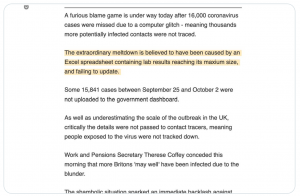Do More with Less: For Efficiency and Growth
In this blog, we will explore how to automate reporting can enable you to do more with less. In today’s fast-paced environment, ensuring your team are able to efficiently and rapidly produce accurate reports and insights are a vital part of business. , freeing up valuable time and resources for a deeper dive into the data or other strategic initiatives.
-
The Challenges of Manual Management Reporting:

Traditional reporting uses varying amounts of human intervention, requiring time at the source, manipulation, and presentation. These processes can be time-consuming and error-prone with each area having its own challenges. How do you automate financial reporting or automate customer support reports.
-
Source
The source data can include system extracts, data files and databases. Challenges come from making this repeatable, accurate and responsive.
-
Storage
How to store your historic data, what do you store and where. File storage on a server or SharePoint has limitations making it hard to maintain and retrieve information. Excel whilst a great reporting tool has many pitfalls.
-
Manipulation
Often the most challenging and labour-intensive element. Ensuring the source is in the best format for the presentation tool in the fastest and most accurate way is key. Adding formula, counting data points and rearranging spreadsheets can be boring, error prone and labour intensive
-
Presentation
How to present the data to allow users to understand and take action is the central aim. Traditional reporting uses varying amounts of human intervention, requiring time at the source, manipulation, and presentation.
-
Benefits of you Automate Reporting:
-
Time and Cost Savings:
Automation reduces the time spent on manual data collection and processing, allowing you to generate reports faster and more efficiently. By eliminating repetitive tasks, you can save valuable hours and redirect your efforts towards more strategic activities, giving a Return on Investment (ROI).
Measure the return on investment by looking at the amount of time saved by implementing the new process and divide that by the amount of time that the new process has taken to implement. or better still use the cost of both sides of the equation
Also, consider the frequency; creating a manual report once per year will not be as costly as running a manual report every week.”
“If you can automate a manual report that takes 4 hours per week to produce with about 20 hours of development time, this development investment pays off after 5 weeks.”And that is just the direct benefit
There is also an indirect benefit of the report being available 4 hours earlier, allowing more time to act upon the content and more further value

-
Accuracy and Consistency:
Manual reporting is prone to errors, whether due to human oversight or data inconsistencies. Automation minimizes these risks by ensuring data accuracy, consistency, and eliminating human error. This reliability enables you to make informed decisions based on accurate and up-to-date information.
-
Real-time Insights:
With automated reporting, you can access real-time data and insights at your fingertips. This empowers you to monitor key performance indicators (KPIs), track progress, and identify trends promptly. Timely access to actionable information helps you make informed decisions and drive business growth.
- Customization and Flexibility: Automated reporting solutions offer flexibility in terms of customization. You can tailor reports to meet your specific requirements, choosing the metrics, visualizations, and formats that best suit your needs. This adaptability ensures that your reports are relevant and meaningful to your stakeholders.
-
Implementing Automated Management Reporting:

-
Identify Key Metrics: Start by identifying the key metrics and performance indicators that are most relevant to your business goals. Determine what data you need to track and analyse to gain meaningful insights.
- Choose the Right Reporting Tools: Evaluate different reporting tools and software available in the market. Look for solutions that offer automation capabilities, data integration, and customizable reporting options. Consider factors such as ease of use, scalability, and compatibility with your existing systems.
- Streamline Data Collection and Integration: Automate the process of data collection by integrating various data sources, such as financial systems, CRM platforms, or project management tools. This integration ensures that data is updated in real-time and readily available for reporting purposes.
- Design and Schedule Reports: Create report templates that align with your specific reporting needs. Customize the layout, visualizations, and metrics to present information in a clear and digestible format. Schedule reports to be generated automatically at regular intervals or on-demand.
- Monitor and Iterate: Regularly review your reporting processes to identify areas for improvement. Monitor the relevance and effectiveness of your reports, seeking feedback from stakeholders. Make adjustments and refinements as needed to ensure your reporting continues to deliver value.
Conclusion:
Automating management reporting is a game-changer for businesses seeking to maximize productivity, accuracy, and strategic decision-making. By leveraging automation tools and processes, you can eliminate manual, time-consuming tasks, reduce errors, and gain real-time insights. Embrace the power of automation and unlock new opportunities for growth, allowing you to do more with less.
Find other useful SQL, Power BI or other business analytics timesavers in our Blog
Our Business Analytics Timesavers are selected from our day to day analytics consultancy work and are the everyday things we see that really help analysts, SQL developers, BI Developers and many more people. Our blog has something for everyone, from tips for improving your SQL skills to posts about BI tools and techniques. We hope that you find these helpful!
Blog Posted by David Laws




